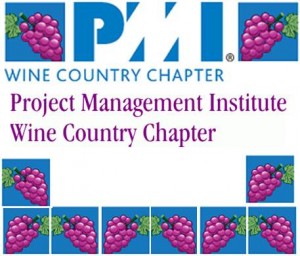Inspired by the Toyota Production System, Mary and Tom Poppendieck describe the seven wastes of software development as: partially done work, extra features, relearning, handoffs, delays, task switching, and defects. In this video from the February Scrum Professionals MeetUp, Kim Poremski explores the seven wastes and introduces tools and techniques to overcome the seven wastes and unlock organizational agility and scalability.
Category Archives: project management
World Café – Scaling Highly Interactive Meetings
World Café is a fun, flexible, and scalable technique for group conversations that leads to creative solutions to complex problems. World Café has some similarities to Open Space Technology: both techniques work for groups ranging from a few people to a few thousand; both are frameworks that support individuals and interactions. World Café is useful for generating and communicating ideas, making decisions, and even doing hands-on work. We’ll be teaching product owners how to use it in our upcoming Advanced Certified Scrum Product Owner (A-CSPO) workshop.
How It Works
The facilitator breaks the room into groups, then sets them to explore a set of related topics, one per table. Each table has a host whose job is to stay with the table and provide continuity while the groups discuss the topic. The other participants rotate between tables on a regular schedule, perhaps every 15-30 minutes. The idea is that those who travel between tables will cross-pollinate ideas between the topics and bring fresh perspectives. By participating in each topic, the participants come to have a holistic understanding of the main issue, and are able to understand each sub-issue within this context. In the last round, people have the option of returning to a previous table so there is opportunity for closure and continuity.
Read the full article…
What Is The Role Of Project Manager In Scrum?
This question came from a client: What is the project manager’s role in scrum?
In answer to your question about project managers, there is no project manager role in scrum. The duties of a project manager gets split between the product owner, scrum master, and the development team.
The product owner has the vision of the product and is the business representative accountable for making sure the business is kept up to date about the product, the schedule, and the budget. The product owner does this in multiple ways including:
- Grooming and refining the product backlog
- Understanding the development team’s velocity so he/she has a sense of when backlog items may be ready for release
- Communicating frequently with the stakeholders
- In the sprint review meeting, helping the team demonstrate new features and facilitating conversations with the stakeholders on the direction of the product and the product backlog
- Sharing and maintaining a budget
Scrum Retrospectives With Cathy Simpson
Our own Cathy Simpson talks about how to do an agile retrospective with your scrum team in this video. The 5-step retrospective agenda she talks about comes from the book Agile Retrospectives: Making Good Teams Great.
Should Management Use Velocity as a Metric?
 Many well-intentioned managers have a fundamental misunderstanding about velocity. They think it is a measure of how hard the scrum team is working or how much they are producing. Neither of these is correct. Velocity is a tool for predictability.
Many well-intentioned managers have a fundamental misunderstanding about velocity. They think it is a measure of how hard the scrum team is working or how much they are producing. Neither of these is correct. Velocity is a tool for predictability.
Because of this misunderstanding, many managers think that the team should work toward increasing their velocity. If management focuses on velocity, this will create dysfunction. Imagine that your manager wants to see the team’s velocity increase. This is very easy to achieve; the team can simply increase their story estimates over time. Velocity will climb as high as anyone wants. This won’t correlate to any change in productivity or business performance, and the manager won’t get what they wanted. Worse, the team has just lost visibility and control of their schedule. What’s a scrum master to do?
Is this airhead your product manager?
On the bright side, you definitely can’t call him/her a stuffed shirt…

5 Reasons Scrum Helps Teams Become High-Performing Faster
Scrum masters and product owners know how hard it is to get their team to become high-performing. They can rest assured that they’re on the right track. Scrum helps teams become high-performing faster than other work methods. The reason is simple. Becoming high-performing is baked into the scrum recipe. In my experience coaching agile teams, I have observed over and over that teams that use scrum go from forming, storming, norming and ultimately to high-performing more quickly and reliably than teams that don’t. Here are five reasons why:
Read the full article…
PMI Wine Country – Professional Development Day

Calling all project managers! It’s time to head to wine country! The wine country chapter of the Project Management Institute will host a Professional Development Day on Saturday, August 27, 2011.
Read the full article…
“Embrace change to add more value!” and other “aha!”s
Every time we run an Agile Project Management class we tweak it slightly, based on what we've learned in the last one. Inspect and adapt, as they say… err, I mean, as we say.
Yes you are comprehensively documenting your agile project–just not in English
 If I were re-writing the Agile Manifesto and I wanted to express agile values in terms that spoke positively to the project manager's realm, rather than defining agile in opposition to it, I'd state the third value ("Working Software over Comprehensive Documentation") like this: The best documentation is the product itself.
If I were re-writing the Agile Manifesto and I wanted to express agile values in terms that spoke positively to the project manager's realm, rather than defining agile in opposition to it, I'd state the third value ("Working Software over Comprehensive Documentation") like this: The best documentation is the product itself.
Read the full article…

